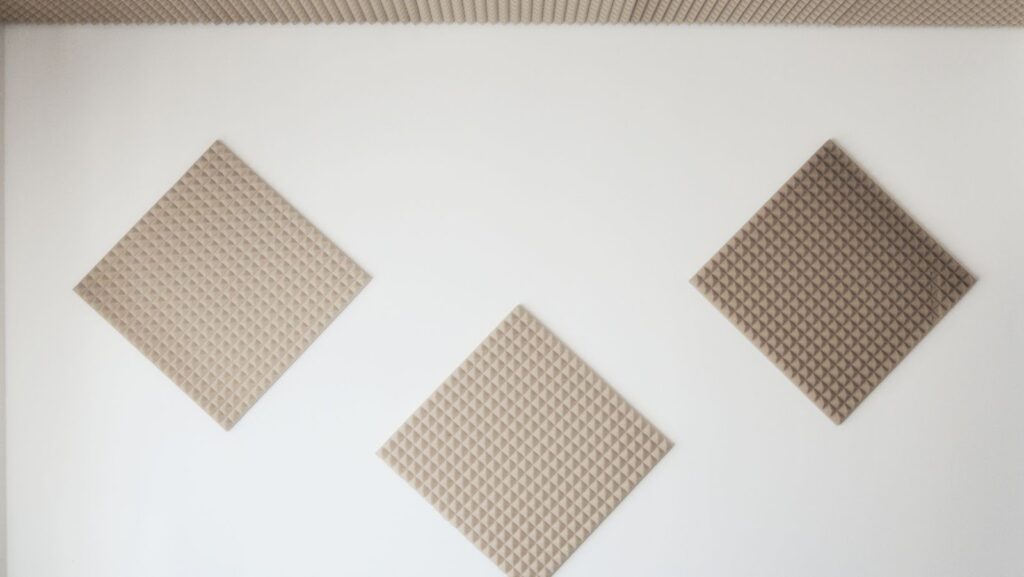
By adding acoustic panels to your studio or practice space. Acoustic panels are designed to absorb sound, and can help reduce echo and improve the overall sound quality in your space.
What acoustic panels are and what they do
Acoustic panels are made of sound-absorbing material that is designed to reduce reflections and absorb sound. By absorbing sound, acoustic panels can help improve the overall sound quality in your space. In addition, acoustic panels can also help reduce echo and reverberation.
Things to consider when choosing acoustic panels
-Size: Acoustic panels come in a variety of sizes, so it’s important to choose a size that will fit in your space.
-Material: Acoustic panels are made from a variety of materials, including wood, fiberglass, and fabric. Each material has its own benefits and drawbacks, so it’s important to choose a material that will work well in your space.
-Color: Acoustic panels come in a variety of colors, so you can choose a color that will match your decor.
-Installation: Some acoustic panels can be installed on walls or ceilings, while others must be freestanding. Be sure to check the installation requirements before purchasing acoustic panels.
Where to place acoustic panels
– Wall-mounted acoustic panels can be placed in any room where you want to improve the sound quality.
– Ceiling-mounted acoustic panels are typically used in rooms with high ceilings, such as auditoriums and gymnasiums.
– Freestanding acoustic panels can be placed anywhere in a room, including on the floor, on a table, or on a shelf.
-When choosing a location for acoustic panels, be sure to consider the size of the panel and the acoustics of the room.
-Acoustic panels can be installed on walls, ceilings, or they can be freestanding.
– Wall-mounted and ceiling-mounted acoustic panels are typically easier to install, but freestanding acoustic panels offer more flexibility in terms of placement.
Once you’ve installed your acoustic panels, you’re ready to enjoy improved sound quality in your space.
Tips for getting the most out of your acoustic panels
– Use multiple acoustic panels: Using multiple acoustic panels will help to further improve the sound quality in your space.
– Place acoustic panels at different angles: Placing acoustic panels at different angles will help to diffuse sound and reduce reflections.
– Experiment with different locations: Experimenting with different locations for your acoustic panels will help you find the best placement for your space.
– Move around the room: Moving around the room will help you to identify any areas where the sound quality could be improved.
– Be patient: It may take some time to find the perfect placement for your acoustic panels. Be patient and experiment with different locations until you find a placement that works best for your space.
Acoustic panels are a great way to improve the sound quality in your studio or practice space. By absorbing sound, acoustic panels can help reduce echo and reverberation. In addition, acoustic panels can also help improve the overall sound quality in your space.
When choosing acoustic panels, be sure to consider the size of the panel, the material, the color, and the installation requirements. Once you’ve installed your acoustic panels, you’re ready to enjoy improved sound quality in your space.












